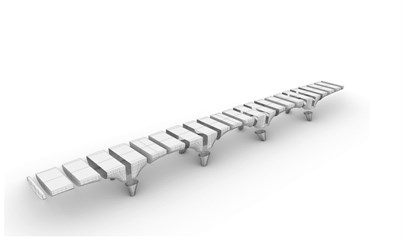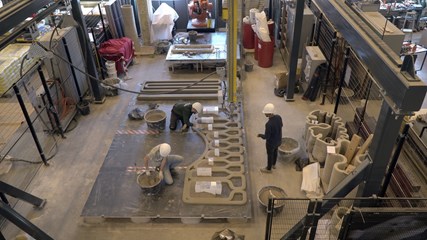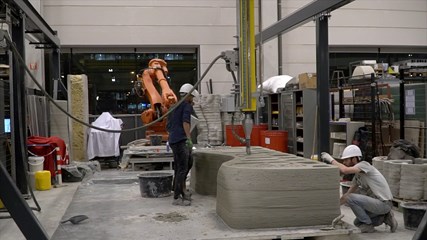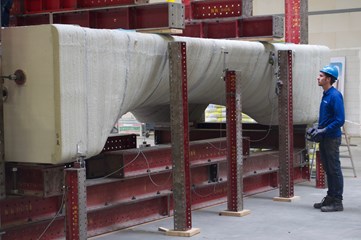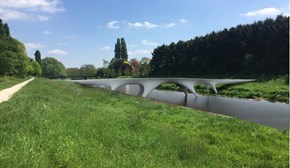3D geprinte brug Zwanenveld

Nijmegen krijgt in 2020 de langste betonnen 3D-geprinte voetgangersbrug ter wereld. Rijkswaterstaat innoveert en wilde ervaring opdoen met de mogelijkheden die 3D-printen biedt voor duurzame en circulaire projecten. Samen met ontwerper Michiel van der Kley is een voetgangersbrug ontwikkeld.
Rijkswaterstaat droeg zorg voor de bouw van de brug. Het onderzoek naar de constructieve veiligheid van de 3D-geprinte brug gebeurde op de TU Eindhoven.
Voordelen 3D-printen
3D-printen met beton biedt milieuvoordelen: zo is minder materiaal nodig, doordat de betonprinter alleen beton toepast daar waar het nodig is. Daarnaast is het efficiënter omdat het ontwerp, de mal, met slechts wat kleine aanpassingen hergebruikt kan worden voor andere nieuwe bruggen.
Minister Van Nieuwenhuizen (Infrastructuur en Waterstaat): ‘Nieuwe technieken zorgen ervoor dat we sneller, duurzamer en goedkoper kunnen bouwen. 3D-printen is daar een mooi voorbeeld van. Deze technologie biedt kansen voor Rijkswaterstaat. De kennis die we met dit project in Nijmegen opdoen, is een investering in de toekomst.’
Extra aandacht duurzaamheid Nijmegen
Nijmegen was in 2018 de eerste Nederlandse stad die zich European Green Capital mocht noemen, de duurzame hoofdstad van Europa. Het Green Capital-jaar zorgde voor veel extra aandacht voor duurzaamheid in de stad. In dit kader heeft Rijkswaterstaat besloten de 3D-geprinte brug te plaatsen in Nijmegen.
Brug in delen geprint
De voetgangersbrug heeft een overspanning van 28,5 meter en een breedte van 3,6 meter en zal in delen worden geprint. Deze delen worden vervolgens op locatie in elkaar gezet. De brug komt in plaats van een verouderde houten brug in de Nijmeegse Geologenstrook in de wijk Zwanenveld van stadsdeel Dukenburg.
In May 2019, a Bridge is being 3D printed in concrete. the Bridge will be placed in the city of Nijmegen in September the same year. Together with RWS, Michiel van der Kley tries to find if this technique enables us to have a much larger design freedom. The bridge is the first, of hopefully many 3D printed objects to come.
Michiel van de Kley is looking for designs that are almost impossible to make with traditional techniques.
Most concrete constructions are being made with the aid of moulds. The moulds are not only expensive, they are also partly responsible for a bigger uniformity. When you 3D print, you do not use a mould. You 3D print the material in thin layers, and layer by layer, while the object kind of arises. And, you 3D print objects and parts one by one, giving it opportunities to add variety to the scene.
MIchiel van de Kley: "Apart form these advantages, we can use very powerful and unique software that will give us the ability to not just make this one model but a series of models. Models that belong to the same family but are distinctly different at the same time."
Project partners
Related projects
No results found
Did your company worked on this project? Go to the Public page and list yourself as a project partner to access your company only page
Which project partner should receive your project listing request?
Document generator
Thank you for using the document generator again! Click the button to start a free trial period of 5 documents.
Document generator
Your trial period has been expired. Please contact info@galleo.co.
Click the +Favorite button to add this project to your personal favorites




